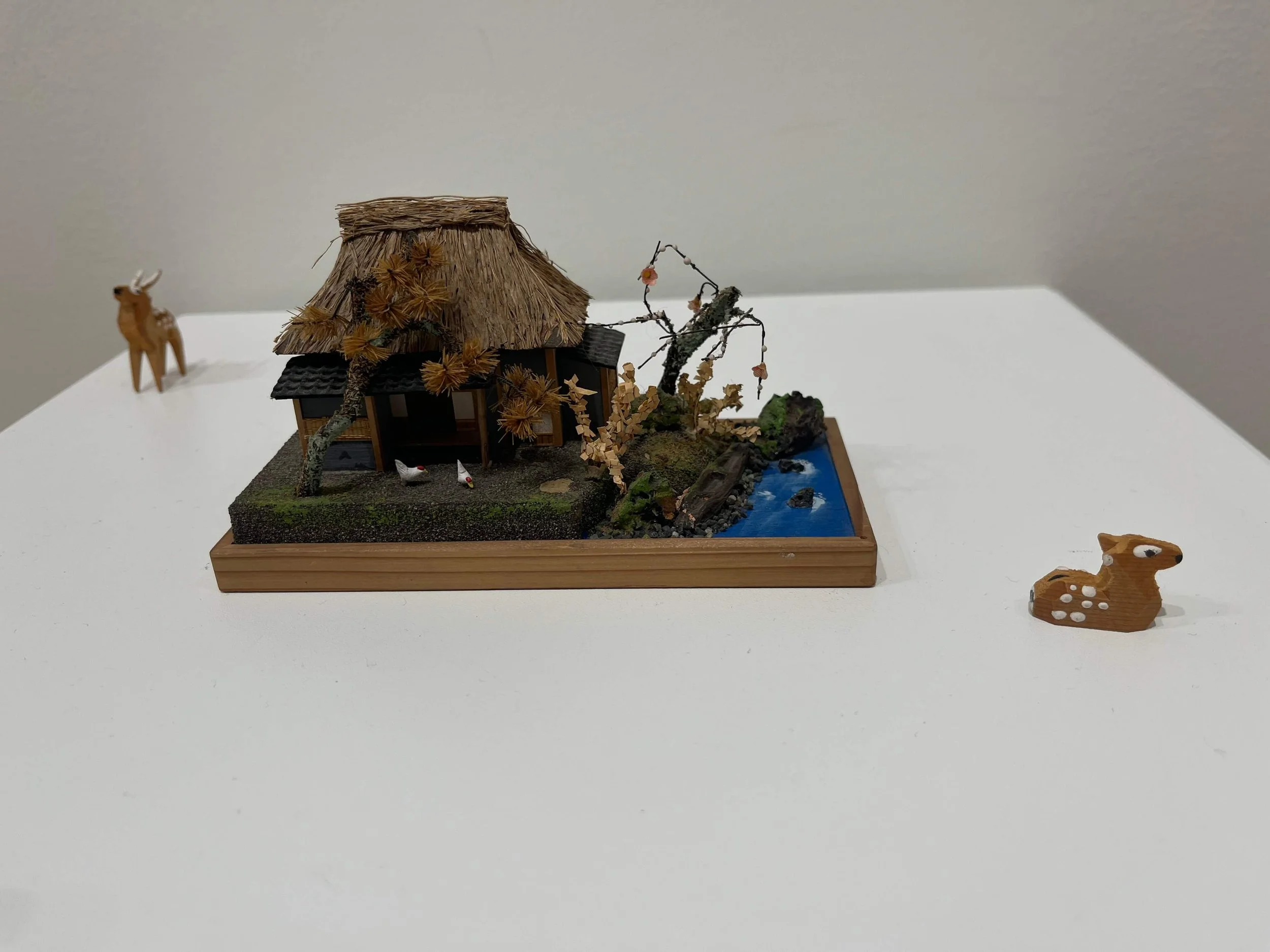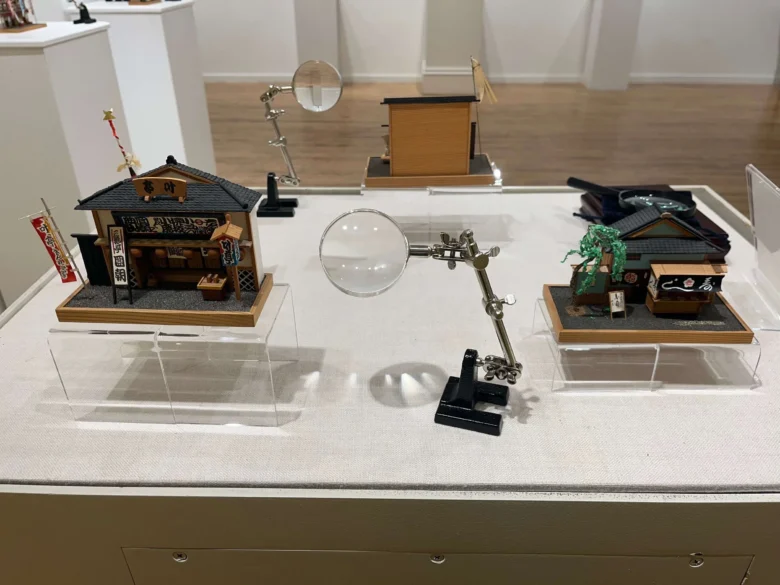The Japan Information & Culture Center, JICC, hosted an exhibit from June 30th to July 31th that showcased traditional Japanese miniatures. Walking through was like stepping 200 years into the past, mixing traditional architecture with playfulness and color. Not only do the miniatures have significant historical implications being from the Edo period (1615-1868), but the endearing tiny recreations were sure to bring a smile to anyone’s face.
Immediately when I entered, the traditional Japanese windows lining the right side of the room and lights angled down to shine on the pieces provided an escape from the bustling street outside. The atmosphere invited visitors to wander from podium to podium where the miniatures were placed, taking in the unique wonders: extremely small deer, chickens, people and more.
Each stand was fashioned with a magnifying glass to see in higher quality the intricate designs in the miniatures, which elevated the beauty crafted into each piece. Certain buildings, such as the Kabuki Theatre, Tobacco Shop, and Matoi (fire flag) were especially vibrant with shades of red, blue, purple and green. Explanations accompanying some of the pieces were helpful, while others such as the sushi shop and chicken coop were self explanatory.
The miniatures were collected by Carol Collins, a retired 6th grade teacher. She spent the latter part of her life running her own children’s entertainment business primarily dressed as a clown, red nose and all. Her junior year of college was spent in Japan, where she developed an immense appreciation for the culture she experienced there. It was during that year, 1964, when she collected all the miniatures presented in the exhibit.
The recreations made it feel like stepping back through time, taking a glimpse at how buildings used to be constructed and decorated. Small pieces of painted wood, bundles of straw, and textured roofs all gave a life to the miniature houses.
“That’s what these little villages looked like, and they’re from the 1800s, those little shops. That’s just interesting to me to see that. When I was there, even, some of those little shops looked like that in 1963,” Collins said. “They’re all handmade with balsa wood, and it’s just amazing how they kept the colors on the little flag shop there. They’re 60 years old and they never faded!”
Normally, the miniatures live in Collins’ special encasement in her home, showing how much she values them.
“I have a beautiful showcase since I got them, and I keep them in there behind glass. My own cabinet has four shelves and I have all the different ones in a lighted area behind glass. That’s why they didn’t fade; they were protected,” she said.
Previously, the miniatures were displayed in three different libraries as a result of Collins’ advocating. Admirably, she is dedicated to preserving her treasured mini shops and figurines, and already has a plan for their future.
“These are all I have, and it’s rare to even have that. I find people online who have one or two and try to sell them. Some of them are $200 a piece, or $150,” Collins said. “I don’t want to sell them, I just want them to be donated as long as they’re going to be used for people to see.”

